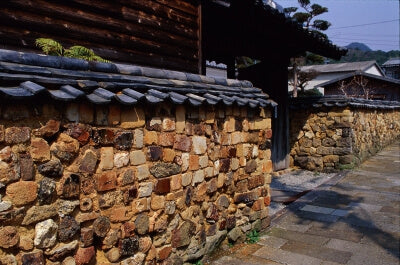Article: When you think of Saigodon, you think of Kagoshima! What are the characteristics of the southern Kyushu art “Satsuma ware”? ?
When you think of Saigodon, you think of Kagoshima! What are the characteristics of the southern Kyushu art “Satsuma ware”? ?

The three traditional crafts designated by the country are the third: "Satsuma-yaki (pottery brand introduced this time), Honba Oshima Tsumugi (silk textile and kimono with a history of over 1300 years), and Kawabe Butsudan (luxurious Buddhist altars with deep historical ties to Buddhism in southern Kyushu, made in Kawabe)." As of February 2018, there are 33 traditional crafts designated by Kagoshima Prefecture alone! Among them, a unique one is the "Taiyo Flag" (surprisingly, a traditional craft originating from Kagoshima: flags hoisted by fishermen when heading out to sea). Various works with rich history and uniqueness have been created in Kagoshima, representing traditional crafts in Japan. In this article, we will focus on "Satsuma-yaki," a type of pottery.
Index
The History of Satsuma-yaki
Satsuma-yaki, the brand, emerged during the Korean Campaign (war with Korea in 1597), where Shimazu Yoshihiro, a samurai of the 17th generation of the Shimazu family who participated in the war at the command of Toyotomi Hideyoshi, brought back 80 Korean potters to Kagoshima. They started producing pottery, marking the origin of Satsuma-yaki. Subsequently, Satsuma-yaki developed its industry independently throughout Kagoshima Prefecture, and by 1867, it was exhibited at the Paris Exposition Universelle as representative Japanese pottery. It has now become one of the prominent pottery brands, alongside Arita-yaki (Imari-yaki), Seto-yaki, Mino-yaki, Kutani-yaki, and Bizen-yaki.
The Making of Satsuma-yaki
The process to achieve the completion of Satsuma-yaki involves steps such as preparing the clay, shaping, firing, and painting. After forming the piece according to the chosen design, artisans may add handles or intricate carvings. One distinctive feature is the division of labor, with specialized artisans working on specific stages such as clay preparation, wheel-forming, and painting. This segmentation aims to protect the artisans' exceptional skills and uniqueness from becoming widely known. During historical periods, tasks were further divided, even down to those splitting and transporting firewood used for firing.
When shaping the intended vessel using a potter's wheel, artisans rely solely on their hands, without the use of molds. However, dimensions, weight, and form remain consistent across all pieces. The division of labor and the use of specialized techniques also extend to intricate carving, where artisans with specific skills handle this process. Carving intricate patterns on large ceramics demands intense concentration, and artisans employ various strategies to cope with the drying of the clay during extended work periods.
Similar precision is required during the painting process, carried out in a designated room. After firing, artisans carefully paint the just-gilded portion before adding various paint colors. The brushes used for painting are thin-tipped, unlike those used for general painting. Satsuma-yaki is categorized into white (Shiro Satsuma) and black (Kuro Satsuma), with white Satsuma characterized by fine cracks visible on the surface. White Satsuma is often associated with higher-ranking individuals, while black Satsuma, historically, has been used for everyday items like teapots.
What Kind of Pottery Satsuma-yaki is? Characteristics? White Mon, Black Mon? What Brands are There? Famous Kilns (Artists)?
Now, what exactly is this pottery called "Satsuma-yaki"? What are its characteristics? Let's explore the distinctions between White Mon and Black Mon and introduce some of the prominent brands and artists associated with Satsuma-yaki.

White Mon, Black Mon
Characteristics: Introducing Satsuma-yaki brands produced in Kagoshima, including White Mon (Shiro Satsuma) and Black Mon (Kuro Satsuma)! While Satsuma-yaki has a history of 400 years, representative works include "White Mon" and "Black Mon"! However, Satsuma-yaki goes beyond these two types. When classified based on tradition, there are six categories: Kono Series, Ryumonji Series, Naeshiro Series, Nishimochida Series, Hira Series, and Tanegashima Series. When categorized as products, there are three types: White Satsuma (Shiro Mon), Black Satsuma (Kuro Mon), and porcelain (which includes patterns like kinrande). For the purpose of this article, we'll focus on the most ancient and popular artistic pieces accepted as "White Mon" and "Black Mon" within the long history of Satsuma-yaki!


